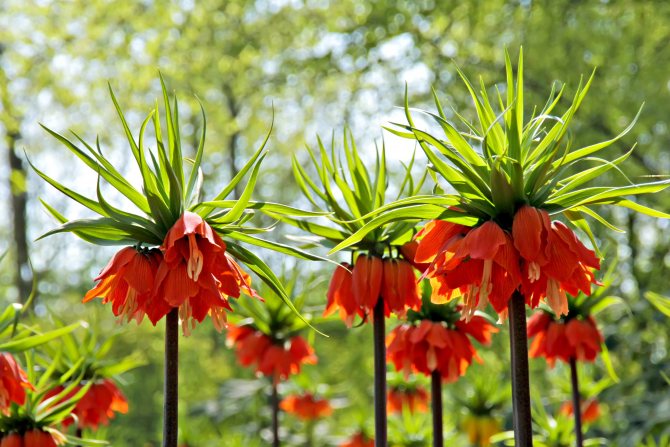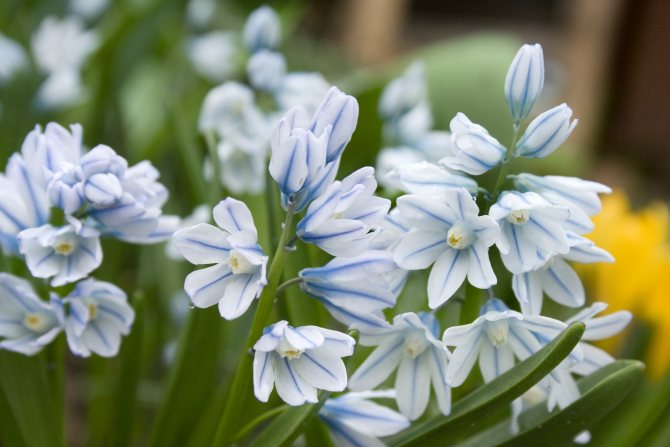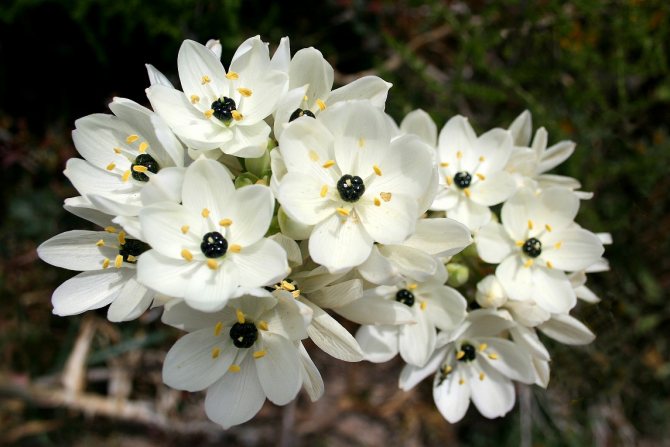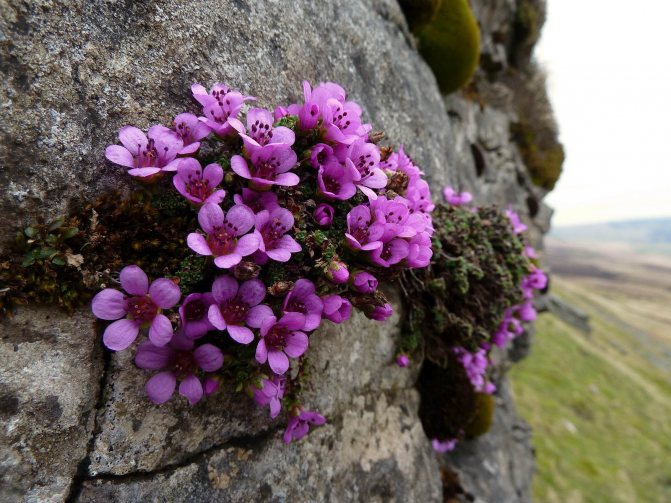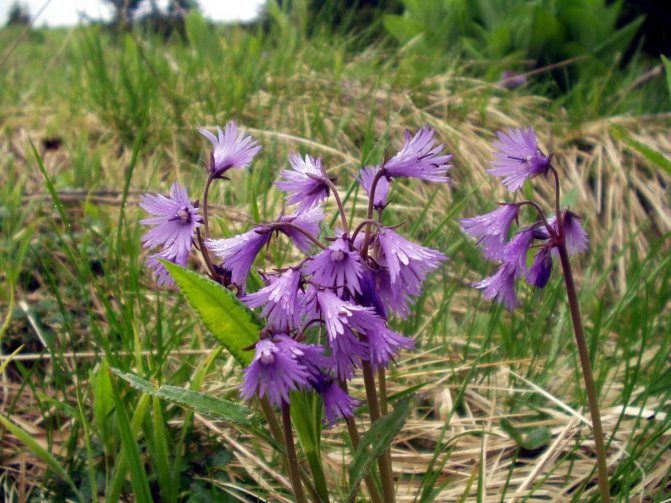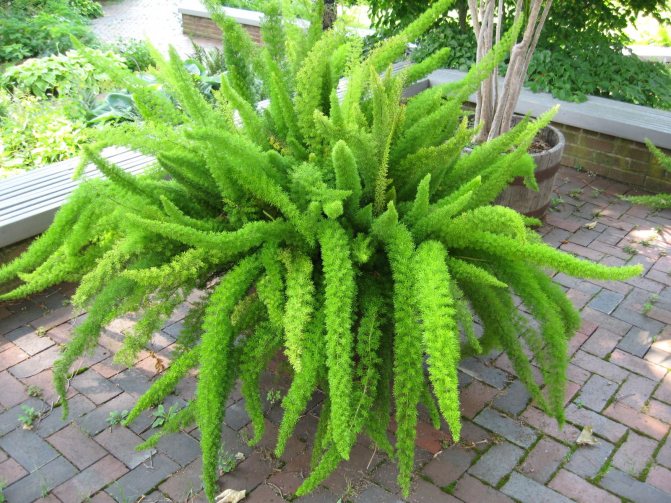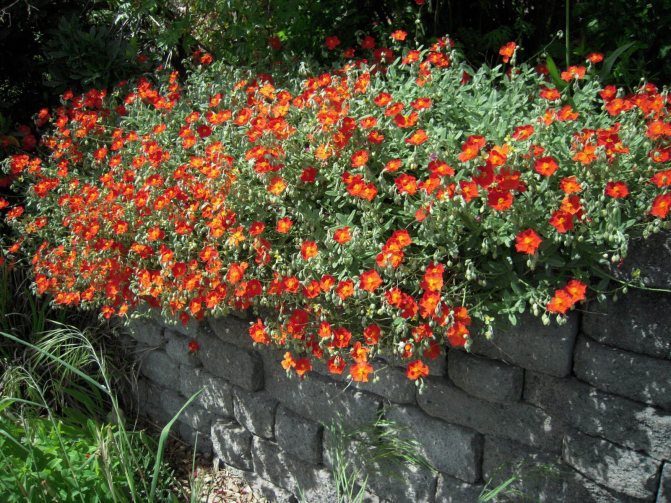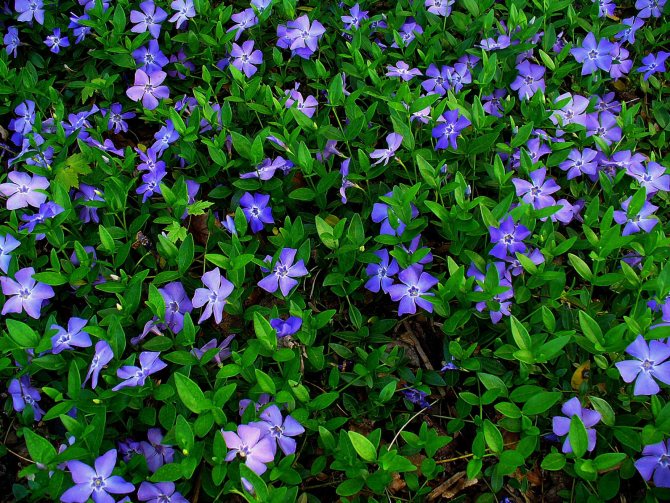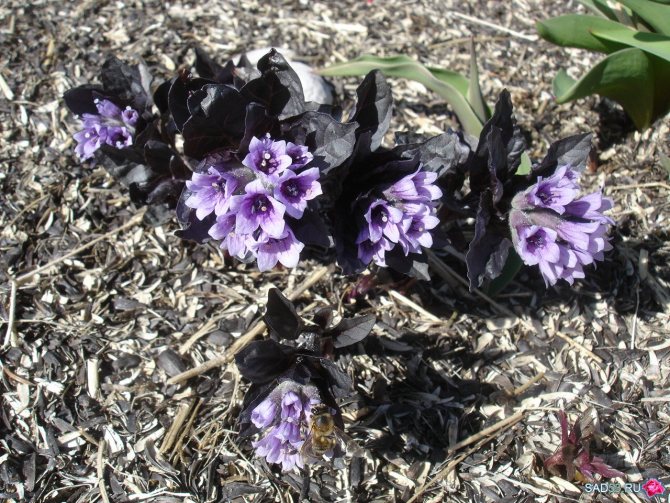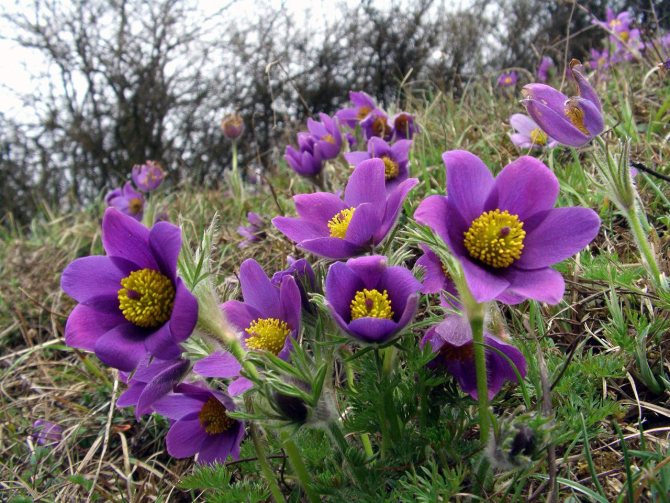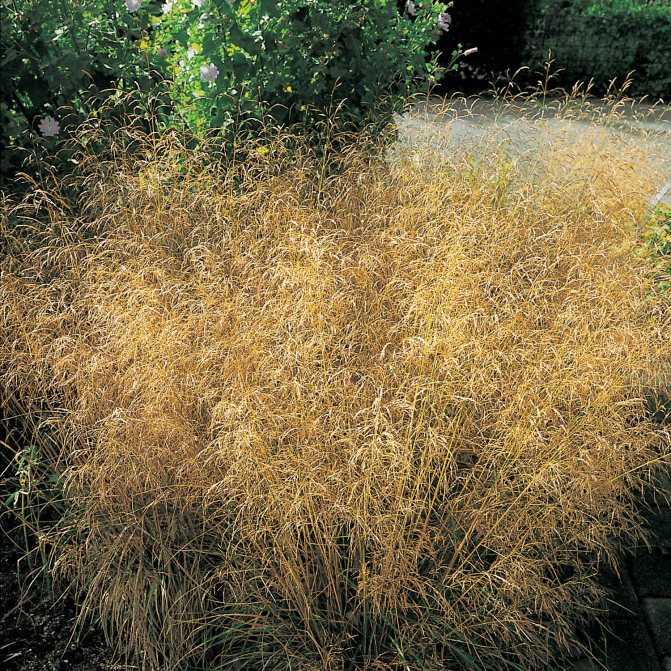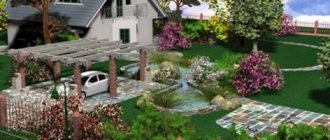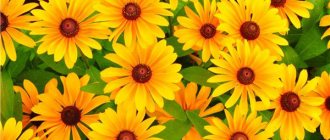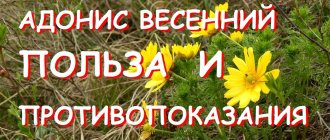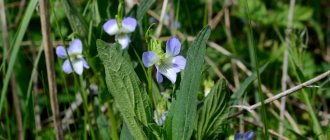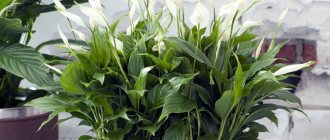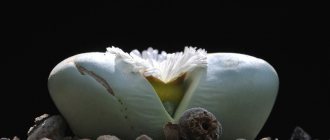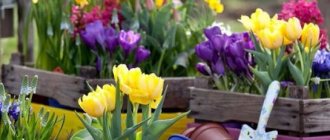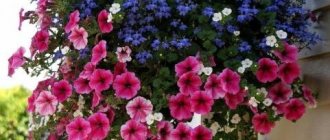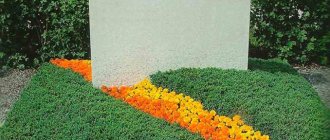Today it is difficult to imagine a modern garden without an alpine slide. It is the alpine slide (or its other name - rock garden) that gives the garden originality, completeness, and, where necessary, the feeling of a changed landscape. All this is created thanks to the successful combination of ornamental plants, flowers, trees and stones.
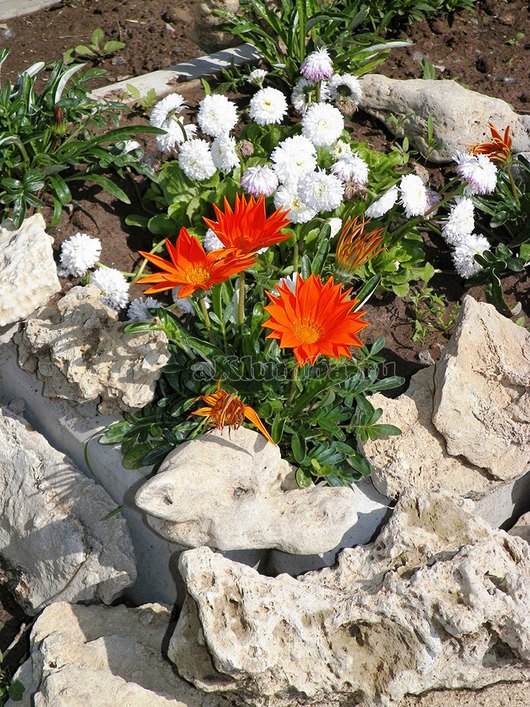
At the first stage of creating an alpine slide, you should determine the location and possible decor. Next, you will need stone boulders of various sizes and shapes, chosen at your discretion.
Also, to change the level of the slide, drainage should be prepared, which lies in the very center. As drainage, you can use special materials, and ordinary fallen leaves and small twigs. From above, the drainage is covered with soil and decorated with boulders and stones as you like best.
The main thing, do not forget: both the earth and the drainage will settle, so the height of the alpine slide itself will be lower than it was when it was laid.
After the slide is ready, the process of its "settlement" begins. At this point, your imagination should not be limited to absolutely nothing. The richness of flora has reached its apogee today, so you will not have any difficulties with the choice of plants for the slide.
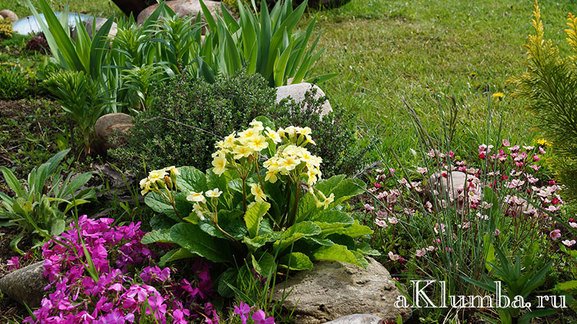

A good addition to the alpine slide can be paths paved with flat stones, plaster sculptures, and the like. However, if you have planned to arrange a decorative pond or a small waterfall in an alpine slide, resembling a natural mountain river in miniature, then you cannot do without expert advice.
Moreover, you should follow the advice during the planning of the slide, and not after its completion, otherwise you will have to destroy part of your own work. Of course, if you created a slide a long time ago, and now decided to supplement it with bubbling water, this is a different matter.
Rock garden: basic rules for creation
Alpine slide (rock garden) is a fashionable decoration of a garden, a summer cottage. As a rule, perennial plants of various shades with different flowering periods are selected for a rock garden, because its main task is to give beauty and delight gardeners from early spring to late autumn.
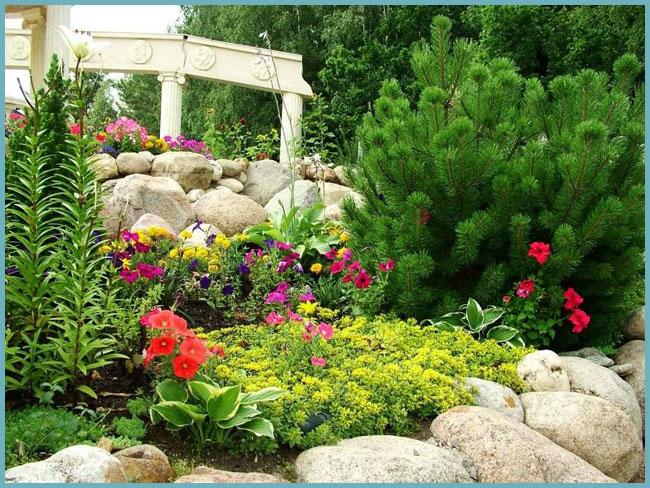

Choose plants for your alpine slide that feel comfortable in the open sun
Plants for an alpine slide should be selected taking into account the natural growing environment: some flowers feel great on a stone surface, while others can give a violent flowering only in well-moistened humus-rich soil.
Tip: a rock garden is a miniature mountain with a smooth transition from the rocky top to the more fertile areas below. It is important to maintain its style, the height of different tiers, recreating the natural conditions for mountain flowers and plants, otherwise it may just turn out to be a flower garden with stones.
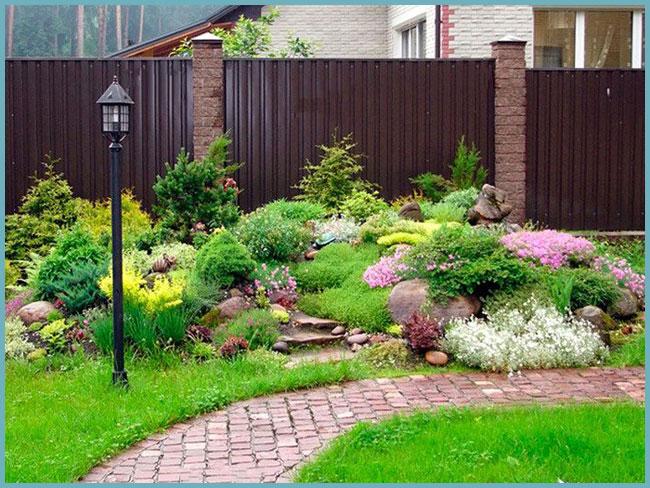

Draw a plan of your alpine slide before construction
When creating a rock garden, it is recommended to follow these tips:
- it is necessary to clearly imagine the type of alpine slide (number of tiers), placement of stones;
- you need to choose the type of stones and their location;
- you should choose flowers for the alpine slide, taking into account the period of their flowering, growing conditions, and shading.
Tip: you can draw a future slide, sign the names of colors, indicate the placement of stones and then create it, following the picture.
Interesting arnica notes and uses
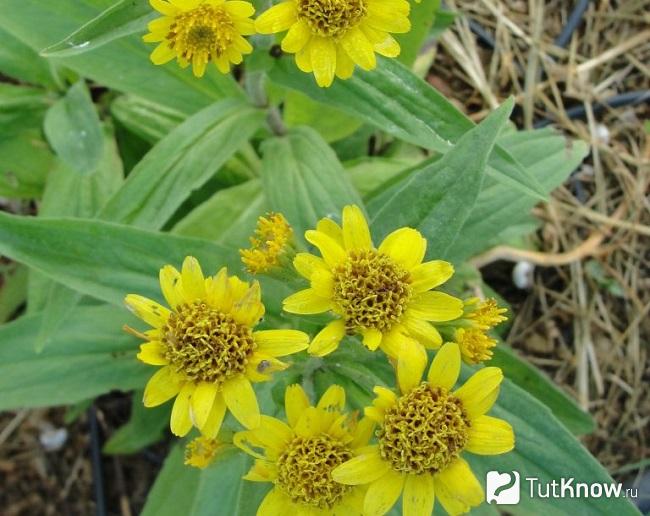

Mainly used for medicinal purposes is the type of mountain arnica (Arnica montana). For a long time, water- or alcohol-based tinctures have been used in veterinary medicine to treat eye diseases in animals. Such drugs help a person to get rid of sprains and bruises. Also in the field of veterinary medicine tinctures are used as excellent anthelmintic drugs. Despite the fact that in official medicine this representative of the flora was rarely used, it was included in the pharmacopoeial lists of the former USSR. Some peoples use flower baskets as plasters, and tenctures (tinctures) and extracts are prepared on the basis of rhizomes.
All these medicinal features of arnica are due to the content of the following active substances in its parts:
- inflorescences contain lute, which serves to prevent diseases of the eye retina;
- in the grass, scientists have identified acids (malic, lactic and formic) and a large amount of tannins that promote disinfection, resist inflammatory processes and lower blood cholesterol;
- arnicin, causes a bright yellow color of the inflorescences.
It is also customary to prepare oil from arnica, which is famous for its warming effect. It is customary to add this substance to the composition of preparations used for massage, it is especially suitable for athletes who have received injuries (sprains). Knowing about these properties of the ram, it is called in Germany "the grass of the fall." Since the aroma of the oil has herbal notes, it is also introduced into perfumes.
A prepared broth based on arnica, even in ancient times, was used by folk healers after childbirth, to stimulate uterine contraction, and this remedy also helped to normalize the menstruation regime.
If you squeeze juice from fresh arnica flowers, then such a substance also has medicinal properties. Spinning should be carried out during the flowering period of the ram and used as a preventive measure against seizures that could cause paralysis. To make the taste of such a drink more pleasant, a small amount of bee honey is stirred in it.
In addition, folk medicine men knew about the calming effects of arnica on the human nervous system. This allowed the plant to be used to recover from a stroke (cerebral hemorrhage). The drugs, which included the ram, contributed to the expansion of the vessels of the brain, which was the reason for the persistent therapeutic effect.
Also, a decoction of arnica inflorescences has been used in the fight against skin problems such as rashes, ulcers or boils. If you make a compress on the lips from the flowers that were used in the broth, then this will become a treatment for herpes (cold on the lips).
However, for the reconciliation of funds made on the basis of mountain arnica, there are a number of contraindications:
- any period of pregnancy;
- it is forbidden to take during breastfeeding;
- you cannot use essential oil inside due to its high toxicity;
- children's age (less than 3 years old);
- patients with high blood clotting.
If there is an overdose of arnica-based drugs, the patient may suffer from shortness of breath or chills. There may also be manifestations of nausea, stomach pain, and diarrhea. When the dosage was significantly exceeded, then under the influence of drugs from the ram, there is a disruption in the work of the heart muscle.
It is important for the above symptoms to immediately seek medical help.
Arnica inflorescences, due to their aroma, are usually used in the production of alcoholic beverages, and also they and the rhizomes of ram were used in the field of chemical pharmaceuticals. There are some Western European countries where the foliage of this plant can be used to replace tobacco leaves.
The ram has also been used as an excellent melliferous plant.
How to choose stones for a rock garden
The main task of the stones in the alpine slide is to recreate the beauty of the mountains, therefore it is important that the stone groups look as natural as possible. When creating a rock garden, preference is given to granite, limestone, sandstone. Each of these stones has a different degree of fragility and moisture absorption.
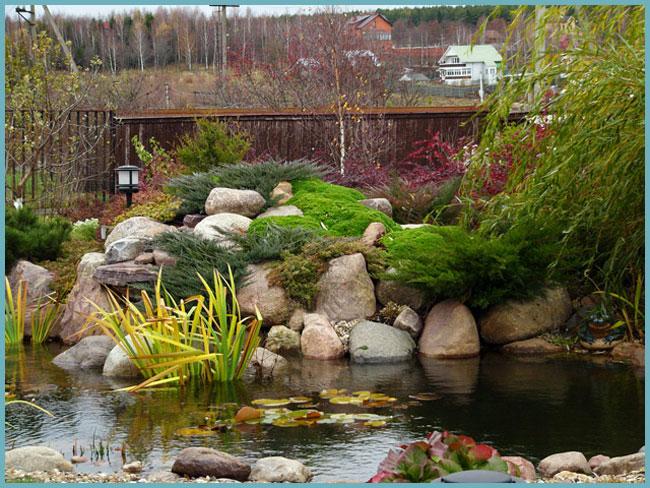

The scheme for laying stones in the rock garden should be well thought out so that the slide looks aesthetically pleasing
Due to the variety of shades, massiveness, granite looks impressive, but it is rather difficult to process, poorly absorbs moisture, and affects the acidity of the soil. It is recommended to plant heather and coniferous plants next to it.
Most often, sandstone is used for the rock garden, which has excellent decorative properties: a rich range of halftones, a smooth coarse-grained structure. The variety of colors of sandstone is striking: there is a light red stone, cream, light and dark beige, pinkish, dark brown. Ideal for all flowers and plants.
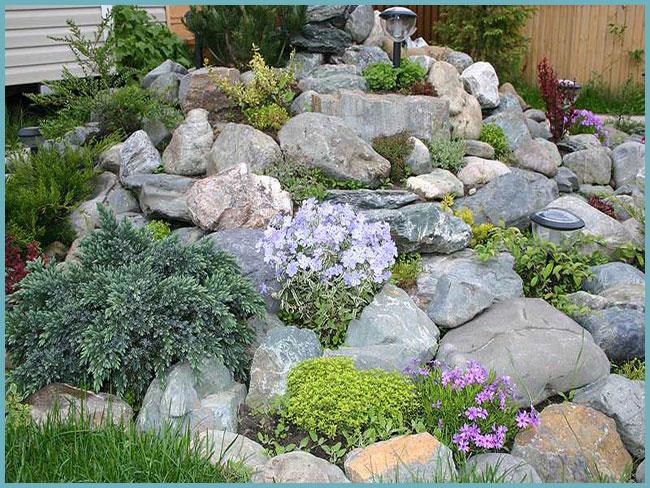

It is desirable that all stones are of the same breed.
Limestone (dolomite or tuff) is also used in the decoration of alpine slides, which has excellent indicators of air permeability and moisture absorption. Ideal for alpine plants, over time becomes overgrown with moss, lichen. Limestone is a fairly soft stone that can be processed outside of production conditions. Over time, all the facets of the stone are smoothed out, it takes on a natural scenic look. Not suitable for plants requiring high soil acidity.
Landing, choosing a place
In the wild, plants can be found in North Africa, Turkey, the Middle East, the Mediterranean Sea, grows on rocky areas, slopes and arid places (this can be guessed even by the nature of the foliage). Accordingly, similar places should be chosen in the garden. Curbs, rock gardens, rockeries, next to retaining walls, and in general on any open, sunny, possibly partial shade, with well-drained sandy soil, the plant will do well.
The most important thing is high-quality drainage, the plant does not tolerate stagnant moisture. In a rainy summer, do not water.
Plants for an alpine slide
Plants for an alpine slide should be chosen based on their shape, color and height.
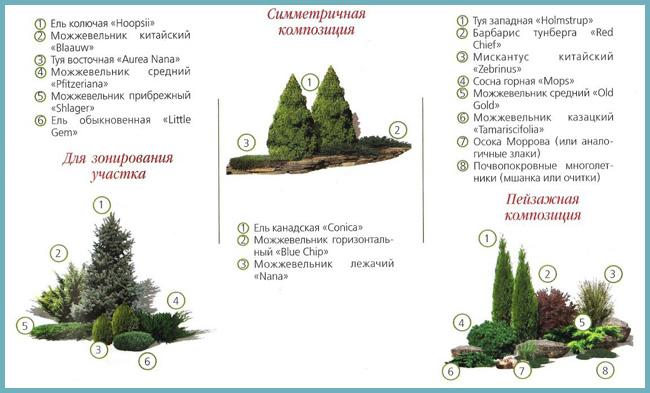

Conifers for an alpine slide
Coniferous plants are especially popular in rock gardens, in combination with stones they perfectly imitate mountain tops:
- juniper (cone-shaped plant of dark green color);
- dwarf spruce (have various shades: from bluish to deep green);
- cypress (attracts attention with a golden top against a background of a dark green base);
- thuja (a bush growing on the sunny side can have chestnut shades).
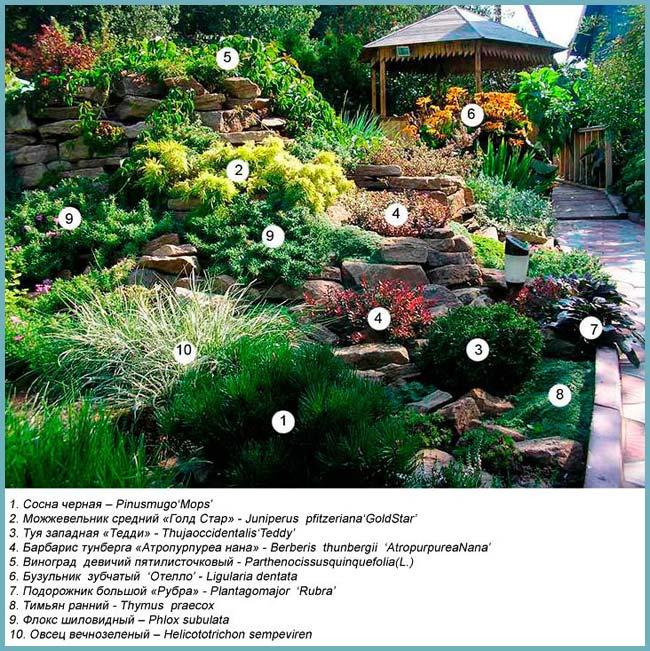

Deciduous plants for rock garden
Deciduous plants for an alpine slide are used less often, since their growth is associated with additional worries for harvesting falling leaves. Therefore, you should choose evergreens:
- dryad (shrub with spectacular white flowers and "fluffy" ball-shaped fruits);
- horizontal cotoneaster (changes color from dark green to reddish, has small flowers of white or pink shades and black fruits);
- Iberis (flowers of lilac, pinkish or white shades, collected in brushes, fruits in the form of pods).
Application in landscape design
The plant will decorate not only any rocky compositions (rock gardens, rockeries), but it can also look great in containers, planters, and hanging baskets... It can also be used as a curb plant or for rabatki. You can use the plant in a single planting, but you should take into account its "spreading".
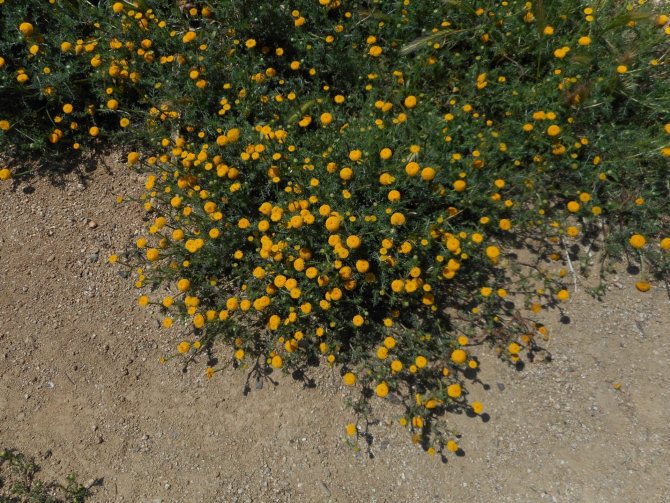

Border from Valentine's anacyclus.
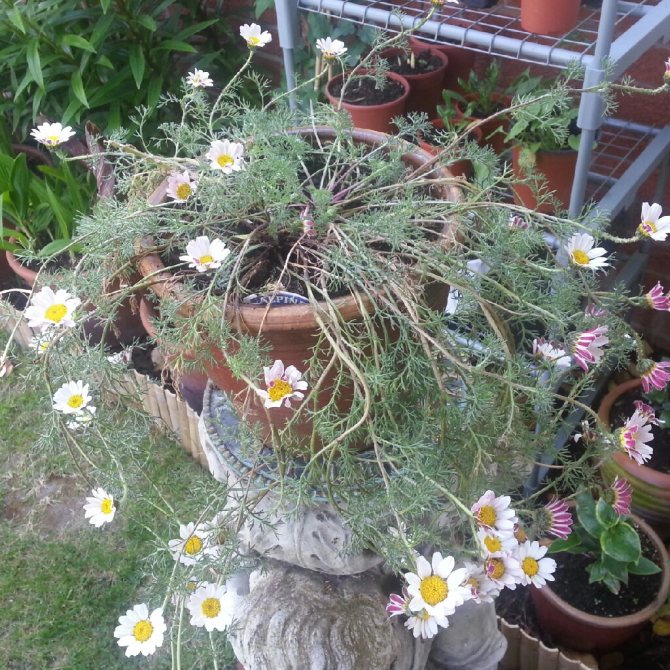

Anacyclus Garden gnome (Garden gnome) in a pot.
Flowers for an alpine slide
Flowers for an alpine slide are perennials, but at the initial stage of its creation, it is allowed to fill temporarily empty spaces with annual flowers and bushes.
Alpine edelweiss (popular name - highlander), growing in the mountains at an altitude of about 1500-2000 meters in poor stony soil, can become a real decoration of the upper tier of an alpine hill. This flower is listed in the Red Book, but at home you can grow it from seeds and then propagate it with seedlings.
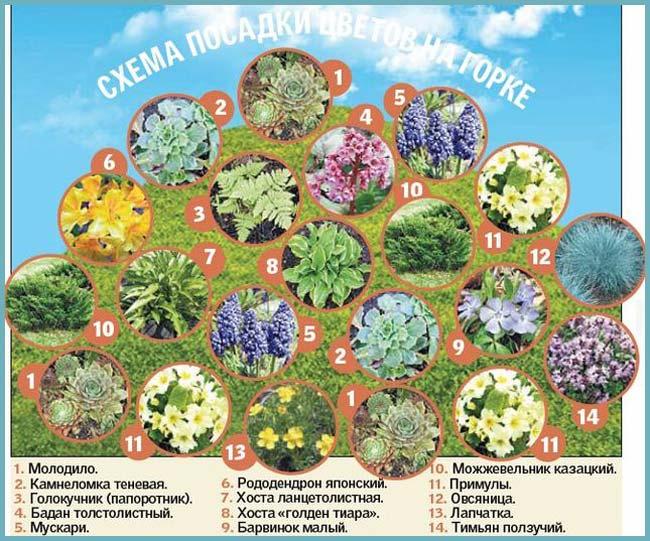

Flowering plants for an alpine slide
You can achieve a harmonious landscape view of the hill by planting edelweiss with other low flowers: stonecrop, allium, gypsophila, herbal carnation, creeping thyme, blue carnation, rejuvenation. Various types of carnations will be an excellent decoration for the upper tier of the rock garden, they create compact lush green bushes that bloom with small colorful flowers all summer, exuding a pleasant aroma.
Thyme creeping differs in flowers of a lilac-purple hue, creates lush pillows. In addition, the honey aroma of this perennial attracts bees and butterflies, which gives the rock garden an additional picturesqueness.
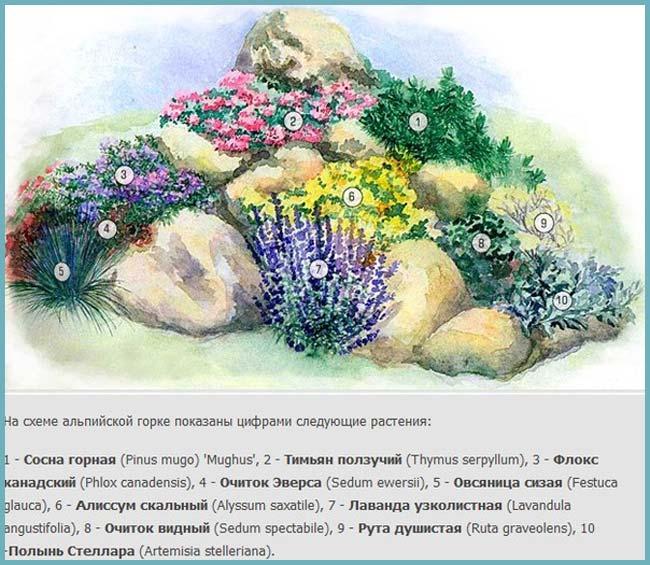

An example of a rock garden
Such a culture looks quite impressive on an alpine hill, as it was rejuvenated. Absolutely undemanding to conditions, fleshy thick leaves create rosettes of various shapes, the shade of inflorescences is purple. Recommended as a plant for an alpine slide for anchoring slopes, as it can grow even in cracks between stones.
For the middle tier of the rock garden, where there is a little less sunlight than at the top, but more moisture and the soil is more fertile, it is recommended to plant phloxes, cultural shawls, woolly chase, sunflower. A subulate phlox blooms in May, the inflorescences are large, can be blue, bright white, pale pink shades. With proper care, it blooms magnificently, completely covering the space reserved for it.
After it, in June, with bright flowers of pale purple, bright crimson, pinkish shades, Aubriet blooms, which can re-bloom in September. This perennial flower is decorative all year round as it has evergreen leaves.
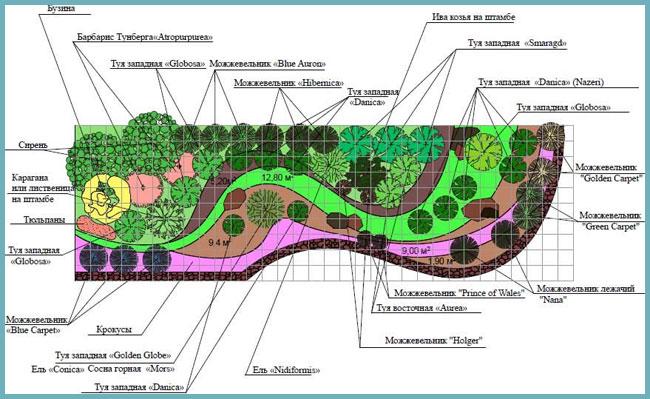

Layout of plants in the rock garden
For the foot of the alpine slide (its lower tier), flowers growing in conditions of high humidity are chosen. Recommend to plant:
- spikelet liatris (inflorescences have the shape of an arrow of various shades of lilac, red, white, depending on the species);
- dushenay Indian;
- saxifrage (various types);
- rhododendrons.
When choosing plants for an alpine slide, one should take into account their requirements for moisture, soil acidity, natural light.
How to propagate arnica?
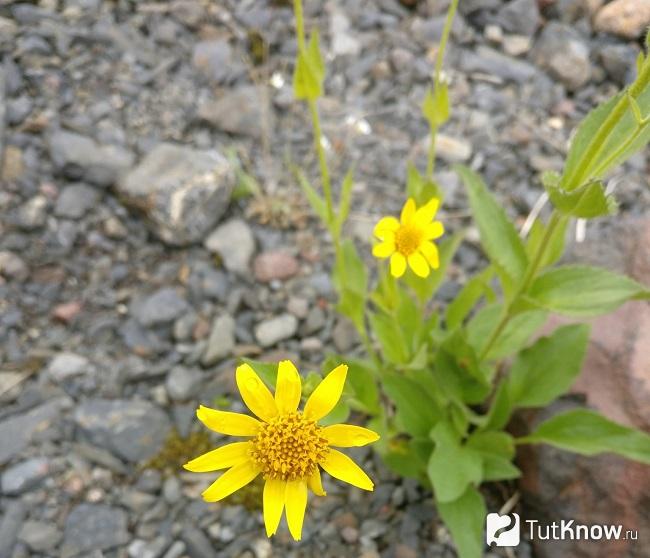

Usually, to obtain new ram plants, the seed or vegetative method is used, when the rhizomes of an overgrown adult specimen are divided.
Reproduction of arnica with seeds.
Sowing is recommended in spring or before winter. The planting of seed should be no deeper than 2 cm. After sowing, the soil is watered. When sown in spring, ram shoots can appear in a cold greenhouse after two weeks, and if outdoors, then after two dozen days. The main thing is not to sow too early, as spring frosts can cause harm to young plants. When the shoots of arnica grow up, it is recommended to weed from weeds and irrigate regularly when the soil dries up. It is important that before the onset of cold weather, the seedlings have a growth in the root ash of a rosette of leaves. This will be the key to a successful wintering. Top dressing is performed only after a year has passed from the moment of planting (for the next growing season). The decorative effect of ram shrubs reaches its peak at 3-4 years of development.
With winter sowing, arnica sprouts can be seen only with the onset of spring, when the average temperature is 15 degrees. Weeding and watering will also be required here.
Arnica seeds can often be sown in early spring for seedlings. To do this, peat-sandy soil is poured into the seedling box and the seed is planted. When leaving, ensure good lighting and regular moistening of the soil. If the first shoots appear after 3-4 weeks, then the container with the seedlings is placed in the refrigerator for artificial stratification (aging in cold conditions). This time should be no more than 4–5 days.
After stratification, the arnica seedlings are again placed in a warm and well-lit place. When the ram seedlings that have appeared grow up, they dive in separate pots (it is better to take from pressed peat). A pick is carried out when 1-2 pairs of true leaves unfold on the seedling. After the return frosts recede at the end of May, you can transplant into open ground, while placing the plants at a distance of 45 cm from each other.
Arnica propagation by division.
If the central part of the plant begins to grow: decorativeness has decreased, and flowering has become scarce, then such a specimen is divided. Both spring and autumn time are suitable for this procedure.
Important!
Be very careful when dividing an arnica bush due to the fragility of the root system.
This is because, although the rhizome itself is powerful, it is located in the ground superficially in a horizontal plane and is easily damaged. Division is carried out with a sharpened shovel or a sharpened knife. To remove the arnica cuttings from the ground, use a garden pitchfork, with the help of which the plant dug around the perimeter will be extracted with the least loss. After removing the cuttings, sprinkle all the media with crushed charcoal or ash and immediately plant them in a new place. After planting, watering is carried out.
The engraftment of such parts of the sheep occurs rather quickly. If the planting was carried out in spring, then young plants will begin to bloom this summer, but here it is important not to forget about timely watering. When carrying out autumn planting for the winter, cover with spruce branches should be provided to avoid freezing.
- See also breeding rules for Choisia
Alpine slide on a personal plot: photo
Plants for sunny and shady places
The area should be sunny enough, as most rock garden plants love the sun.
Which slope to choose:
- southern, southwestern exposure - ideal, very sunny;
- the eastern ones are less sunny;
- the northern ones are almost always in the shade.
On sunny southern slopes, only light-loving plants that are tolerant of periodic drought should be planted. Alpine slide in the shade is much more difficult to organize, the choice is small.
Where not to place a rock garden:
- It is not necessary to place rocky slides near tall trees, as they overshadow the plants, and their roots take up water.
- Areas in the shade of the house are not suitable.
- The proximity of deciduous trees means an additional problem with the regular cleaning of the rock garden from leaves, which is especially tiring in the fall.
Light-loving rock plants for the southern slopes:
- saxifrage,
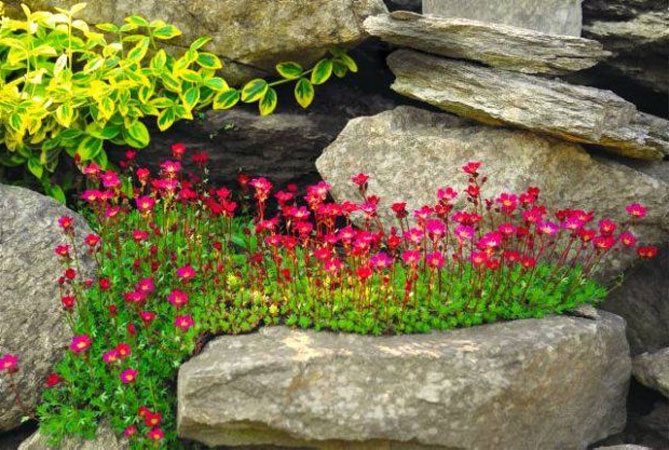

- thyme,
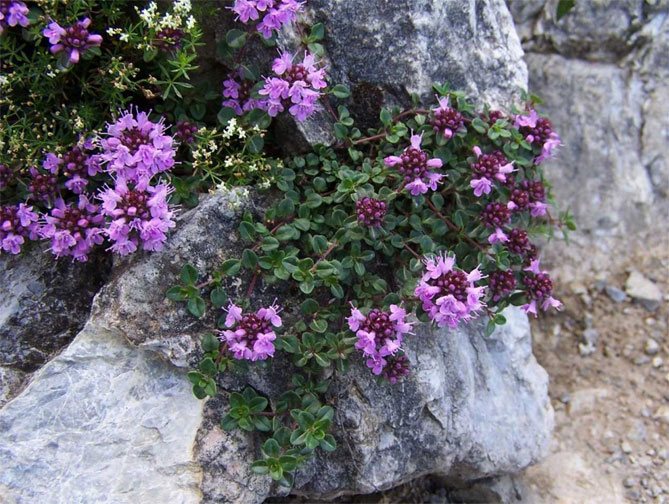

- rejuvenated
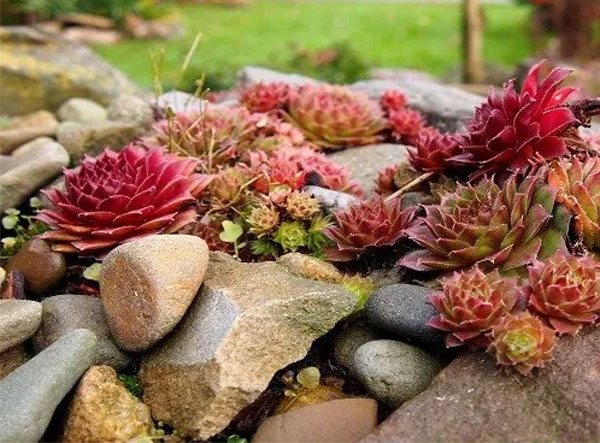

- breakthrough,
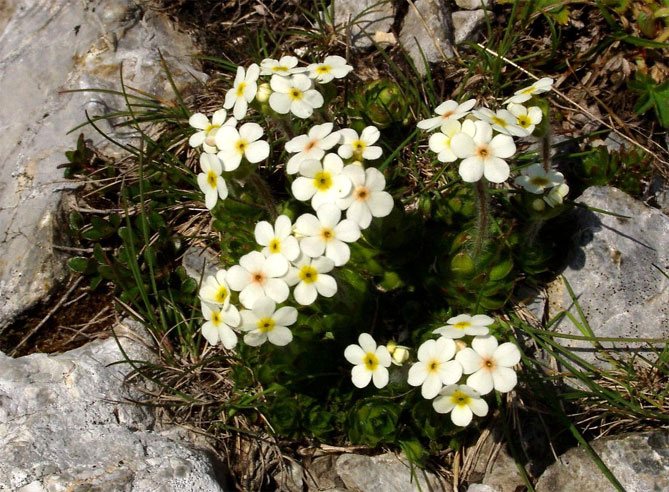

- veronica.
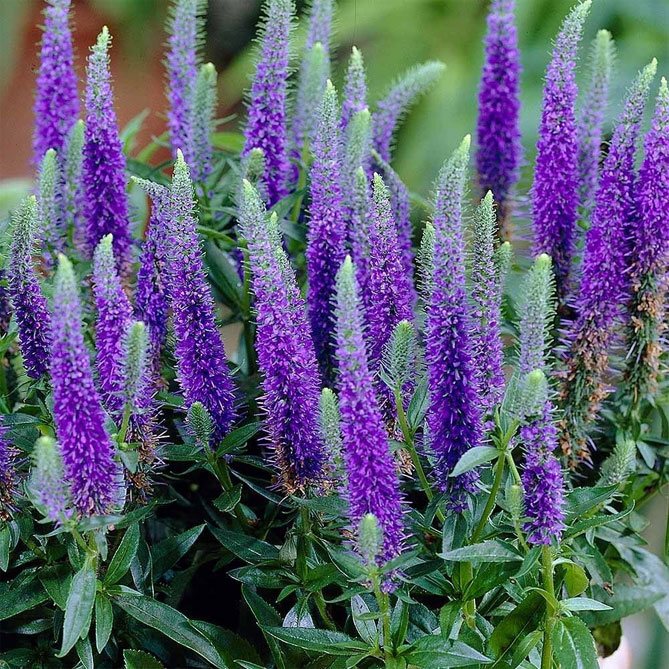

Plants for partial shade:
- corydalis yellow,
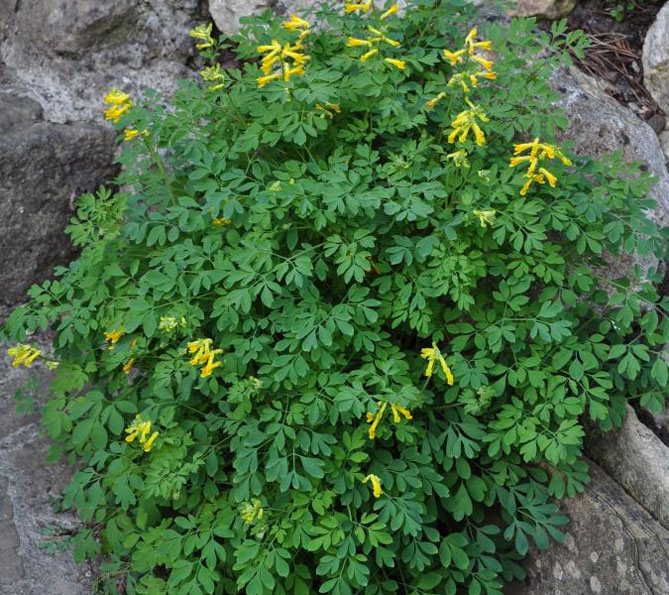

- geykhera blood red,
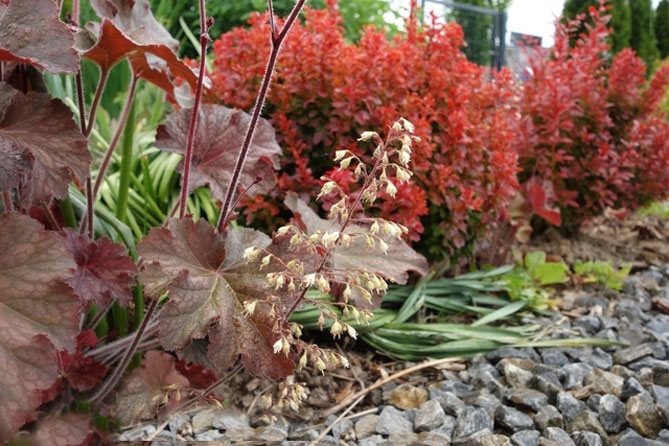

- kandyk (erythronium),
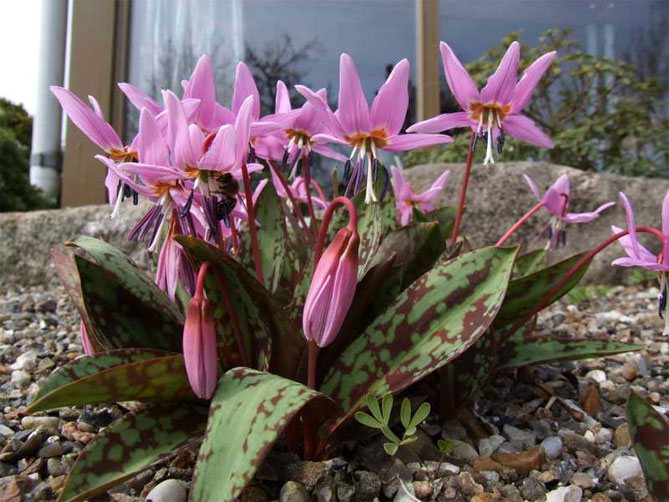

- armeria seaside.
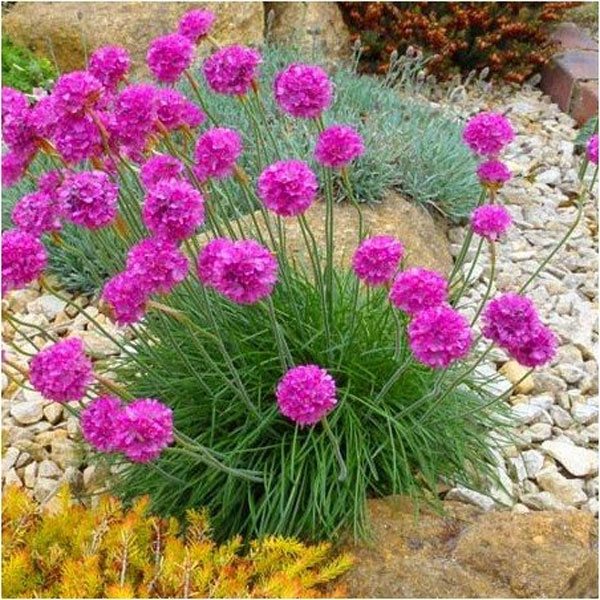

For very dry rock gardens, the following are suitable:
- clean,
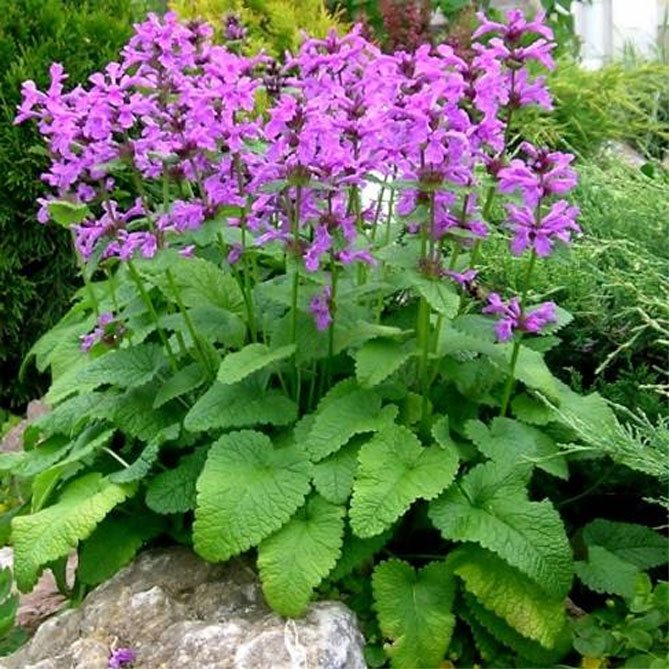

- spring adonis,
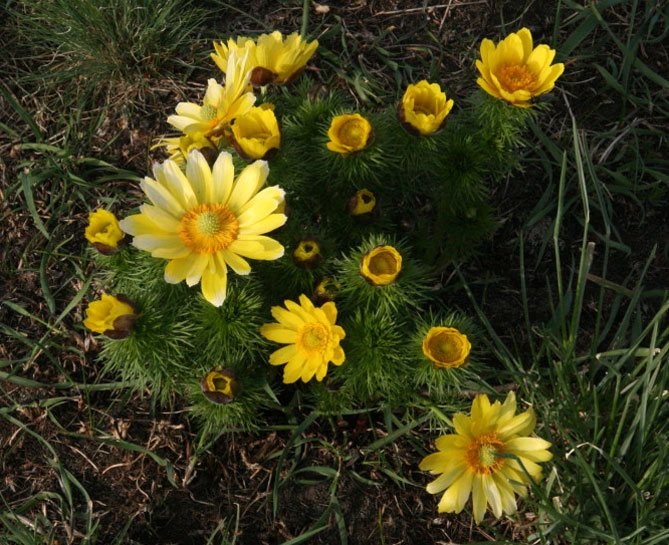

- fescue,
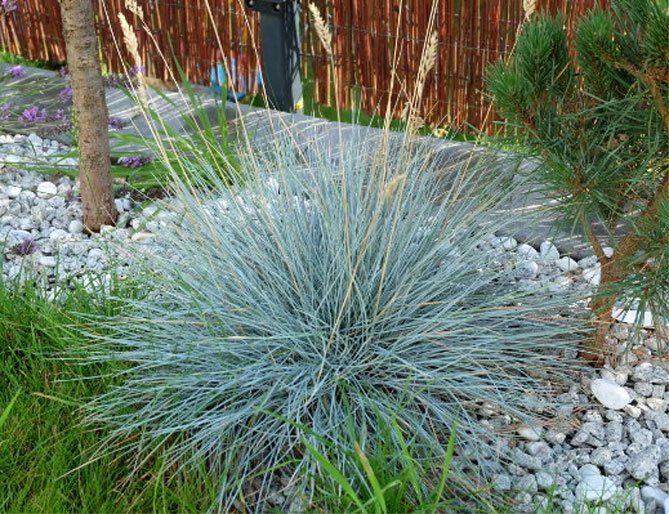

- prickly pears.
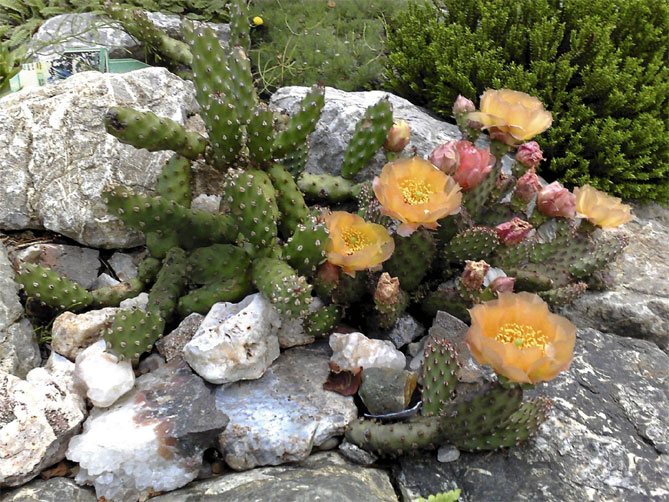

Rock gardens can take different forms, imagination and courage will serve as the best guidelines for their design.
Dweller of the edelweiss mountains
A rare mountain flower named edelweiss is a sign of loyalty and love. He's very unusual. Italians say it is a silver flower. For the people of France, this is the star of the Alps. Like all mountain flowers, he loves the sun's rays.Grows in the snow, at the very edge of high mountains.
Not everyone can see it, much less rip it off. This is a rare plant; only those who have love in their hearts can find it. How skillful it is to reach him, and how strong. But the one who loves unforgettably will achieve his goal. But he should also be adored. Only mountains do not lend themselves to every person, especially their top.
Since ancient times, many would like to get hold of edelweiss. And there were many of them, but the plant remained inaccessible. This influenced its complete disappearance. Already in the 19th century, it was noted that the flower is less and less common. It was believed that only a few dozen copies remained. Edelweiss was coming to a complete extinction. Now this flower is growing, but it can be seen only occasionally. It is strictly forbidden to rip it off. To preserve rare plants that may never appear on earth if their last species disappears, people have provided measures, for example, fines.
Contraindications for use
At the moment, no contraindications have been found. The fact is that the chemical composition of the beetroot has not been fully studied and therefore it is difficult to say who should not drink decoctions and tinctures from this plant. For this reason, it should not be consumed by children, pregnant women and nursing mothers. The exact dosages must be observed. Treatment should be carried out only in courses with breaks.
Be careful with the dosage of the medication. It is very important that the plant is taken strictly according to the instructions, and in case of an overdose, we recommend rinsing the stomach. Before taking, you should consult your doctor.
Traditional medicine does not recognize beetroot as a drug, but traditional medicine continues to use it for its own purposes. The ground part of the plant is an excellent laxative and diuretic. Burachok helps with colds and has an analgesic effect. The tincture removes kidney stones. The plant will help a person with a dog or cat bite if she is sick with rabies.
Arenaria crimson or gerbil
There are over 200 species of gerbil. Perennials are suitable for an alpine slide. Arenaria can be grown from seed for seedlings. When it takes root, you can transplant by dividing the bush. Different varieties bloom for about one month, but after that a bright green carpet will remain on the hill.
Subulate phlox
Flowers that are suitable for an alpine slide are subulate phlox. Ground cover species of these plants cover the earth with a bright colorful carpet. Flowering lasts an average of 2 months. They are easy to hybridize, so the breeders managed to develop a large number of new varieties of garden styloid phlox.
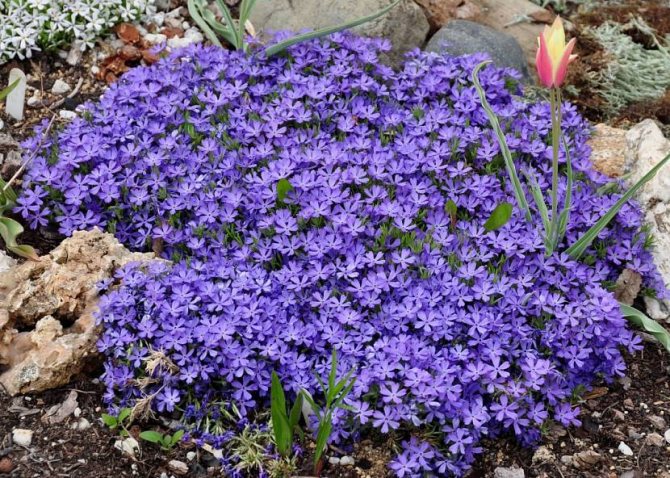

Groundcover Phlox Source
Two-leafed lubka
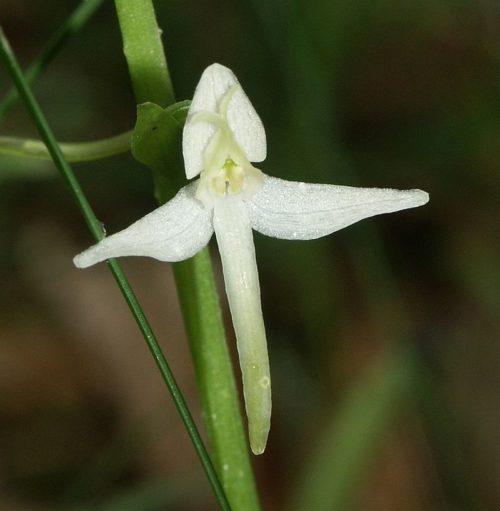

Lyubka is often called field jasmine and night violet, as well as carnation and celandine kernel. There is one plant behind all these names. It is a perennial herb with oblong tubers. It reaches a height of 60 cm. There are only 1-3 lanceolate leaves on the stem. Lyubka's inflorescences are white, small, with a green border at the tips.
Flowers of the Canary Islands
There is Mount Teide, which is strewn with many flowers. There are many among them that are not found anywhere else in the world. These are local mountain flowers.
For example, the bruise of Echium wildprettii. It is quite large, when it grows up, it throws out long inflorescences in the form of spikelets. They have tiny petals that attract insects for pollination.
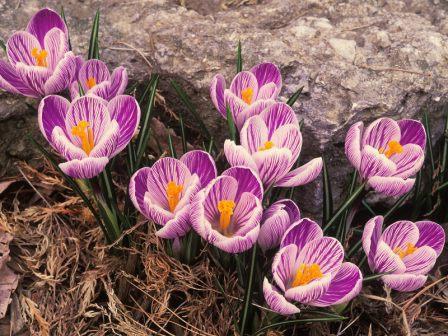

Chinese mouse
There is an unpleasant flower, although it is created by nature. We are already accustomed to the fact that nature almost always creates beautiful, extraordinary things. If you look at it closely, it looks like a bat, but only with closed petals. Its ornate tentacles reach almost 40 cm, in appearance they remind people of snakes with black color.At the sight of him, a person arises horror, disgust. Because of this, it is rarely grown even by brave flower growers. The appearance of the plant pleases no one.
Such different mountain flowers. Their names and features can be seen in numerous photos. These plants are colorful and charming.
Do-it-yourself rock garden is real
Do not rush to plant plants - first you need to prepare a place for them. In short, the scheme for creating a rock garden looks like this:
- The gardener estimates the size of the site and determines the location, area and type of slide. Since most plants need good and regular lighting, it is best to choose a “place in the sun” for them in the truest sense of the word. Areas with varying light and shade are ideal.
- Provide a reliable drain. Mountain flora does not tolerate stagnant water - dry soil is much preferable.
- If you have problems with the design of the rock garden, a ready-made scheme with photographs may be useful. When picking up rocks, keep in mind that some of them can leach the soil and oxidize it.
- The soil is poured between the stones, in most cases, it does not need to be fertilized.
- The composition will be considered ready only when it is properly "settled". To do this, you need to wait a few weeks, ideally all winter.
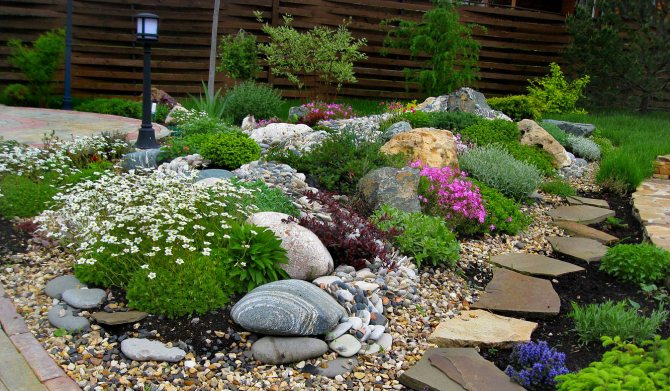

Dolli dolli
... Some add the plant to salads. This is a good honey plant. If you mix beetroot with cucumber herb, then a drink based on them perfectly calms the nervous system and helps to get rid of anxiety.
Features of Colchis boxwood
The tree is worthy of separate consideration as one of the most ancient “settlers” of the Caucasus. Boxwood is believed to have existed as far back as the Ice Age. Now most of the trees are located in the reserve, 20 km from Sochi. Green moss is a natural inhabitant that prefers to grow on boxwood trunks. This creates a unique twilight atmosphere in the groves.
Boxwood is an evergreen tree covered with small evergreen leaves that are very dense. One plant can live up to 600 years. However, the maximum height does not exceed 20 m, and the diameter is 50 cm. Boxwood can bloom - the inflorescences form a dense crown, have a white color and a delicate aroma.
The vegetation of the Caucasus is a combination of rare, endangered and unique flora representatives for this area. Some of them need meticulous protection. Over 80% of the territory of the Caucasus Mountains is nature reserves, which in the future can protect ancient and endangered species from complete destruction.
Perennials
These plants are characterized by short stature, compact size, easy care and long flowering. Features of the life cycle of perennials also depend on the tier where they are planted. Above it is better to place low, unpretentious plants that bloom from early summer to autumn. The higher the site, the faster the soil dries up.
The most common perennials:
- anemone;
- badan;
- veronica;
- geranium, etc.
Iberis loves light, rocky and sandy ground. Crimean, evergreen species of Iberis prevail. This is a stunted bush. It is characterized by pink or white inflorescences.
Perennial carnation is a representative of grasses and shrubs. It has leaves of a linear shape, flowers of different colors. Decorative species are unpretentious to soil, watering. Carnation loves when there is a lot of light. We recommend planting on the upper tiers.
Pink or purple thyme blooms exude a delicate spicy aroma. The plant is planted at the top or in the middle. Thyme is unpretentious in care, does not require special feeding.
Rejuvenated has a wonderful decorative appearance, grows in almost any conditions. Also rejuvenated is known as a stone rose.
Edelweiss is a plant with a height of 10–20 cm. Great for a rock garden. Beautiful and unpretentious to care for.
Perennials are perfect for decorating an alpine slide. They require a minimum of care, and the blooming effect is beyond praise.
What flowers can bloom all summer?
Marigold
They grow from summer to frost. It has many types. Loves light and warmth, has a negative attitude towards strong humidity. Photo:
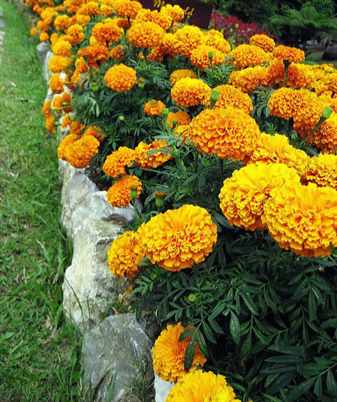

Rhodiola
It begins to bloom from spring to autumn. Sun-loving flower, lush perennial.
Balkan geranium
Also a perennial that grows in the June period, and closer to the autumn season. They are a type of long branching, forming some thickets.
Periwinkle
Looks like a rug, is supportive not only of the sun, but also of the shade. It grows from May to September.
Crimson Arenaria
The color is similar to the name - crimson. This flower is very drought tolerant. Considering the fact that it can grow not only on sand, but also on stones, it is perfect for a slide.
You will be interested in: DIY Alpine slide: design, planning, seating
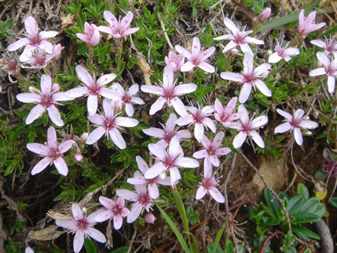

Below you can see what the color scheme looks like:
Varieties of herb for open ground - alissum
About 100 varieties are known, but only five varieties of lobularia are most common in landscape design:
- Mountain Alyssum (Alyssum montanum). European, perennial variety, 10-20 centimeters high. With the help of the stems, a creeping shrub is formed. The flowers are colored light yellow. Gives buds in early April and May.
- Alyssum or sea lobularia (Alyssum maritium). This is a perennial variety, but in our latitudes it is distributed as a one-year culture. Alyssum marine (Alyssum maritium)
Reaches a height of 20-25 centimeters. The stems form miniature rosettes, flowers of a white or purple hue. The flowering period is from early June to the first frost.
- Pyrenean (Alyssum pyrenaicum). The culture reaches a height of 15-20 centimeters, has oval-shaped leaves with slight pubescence. White buds bloom in summer.
- Alyssum creeping (Alyssum repens). Perennial representative of the flora, 45-60 cm high. Leaves are semicircular, collected in a socket. Alyssum creeping (Alyssum repens)
The flowers are painted in a bright yellow hue and begin to bloom in the spring. Alyssum or rock beetle (Alyssum saxatile)... T plain plant for open ground. Reaches a height of 25 centimeters, resembles half-sphere bushes. Alyssum rocky (Alyssum saxatile)
Leaves are gray-white-green, elongated. The flowers are golden yellow. Bloom - from mid-April to May.
Plants have long been admired by people: wild mountain, forest, field. Snow covers the mountains tightly. It is a defense against harsh winters. This happens until the sun's rays help the snow melt.
The name of the mountain flowers is not known to everyone. For example, sedum with fleshy leaves. This flower is resistant to severe winter and summer lack of water. Some of the mountain flowers do not wait for spring, they begin to awaken along with the melting snows. This is how tiny soldanella grows. Its spike-shaped inflorescence grows alone. The plant is small, has purple-pink flowers. It grows in contrast to the austere surroundings. At almost the same time, insects appear that pollinate mountain flowers. The snow is slowly disappearing, the leaves of the plant are gradually coming out. At this time, the flower sets seeds, forms leaves, but already for the next year.
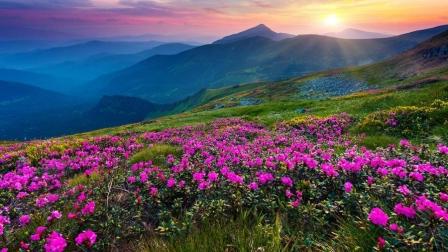

Examples of decorative varieties
Slow-growing woody plants and low-growing plants are ideal plants for a "rocky garden". Conifers for an alpine slide provide a high decorative composition throughout the year.


In miniature stone compositions, creeping and dwarf forms of conifers look great: miniature Canadian spruce "Conica", black pine "Nana", scaly juniper "Blue Carpet", western thuja "Danica"
Combining conifers with different crown shapes and needles in one composition, you can significantly enhance the picturesque effect.
You can learn how to properly arrange a composition of decorative conifers from the material:


Among the deciduous shrubs for the alpine slide, the clear favorites are the decorative forms of barberry, cotoneaster, chaenomeles, spirea
It is difficult to imagine a rock garden without flowers. Beautifully flowering perennials for an alpine slide allow you to give any garden a unique style and uniqueness. When creating compositions, the choice is not limited only to plants characteristic of the alpine terrain. In the "rocky garden", representatives of the flora will also look appropriate, the main habitat of which is forests and the sea coast.
A bright decoration of a rock garden can be: Arends's saxifrage, subulate phlox, herbaceous edelweiss, alpine edelweiss, balearic gerbil, evergreen Iberis, Carpathian bell and many others.
Recent Entries
Rose Petal Jam and Its 7 Health Benefits You Likely Didn't Know About What Fruit Are You According to the Zodiac Sign 11 Best Grape Varieties That Will Help You Create Unique Homemade Wine
Woolly-flowered astragalus
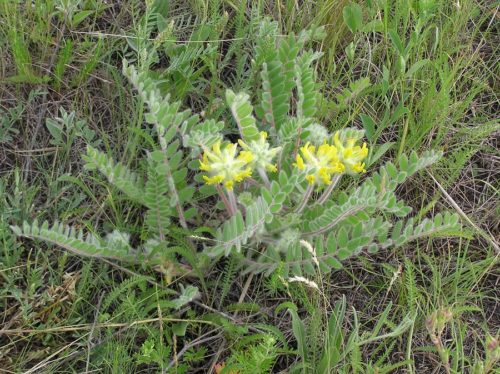

The plant belongs to the relics of the Caucasus, is on the verge of complete extinction. This is a creeping grass, barely reaching 35 cm in height. Most often, the height does not exceed 15 cm, and the length of 1 stem is 4-20 cm. Astragalus spreads on the ground, partially rises. Differs in a reddish tint and the presence of shaggy leaves. Flowers are yellow, small in diameter. Flowering begins at the end of June.
Leafless headpiece
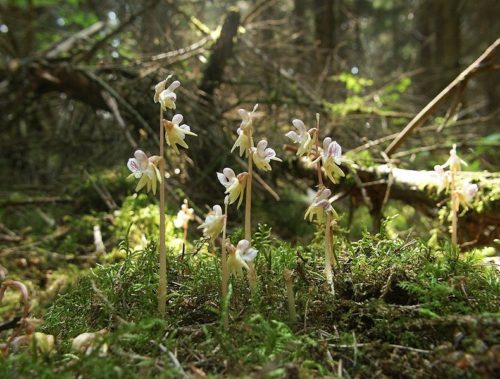

A unique plant with a red stem and pink flowers, from which large stamens stick out. It grows in the highlands in the squat grass. This is an ancient relict variety of caps that is found in Japan and China. The maximum height is 30 cm. The plant is frost-resistant and can live under snow for several years under unfavorable conditions.

